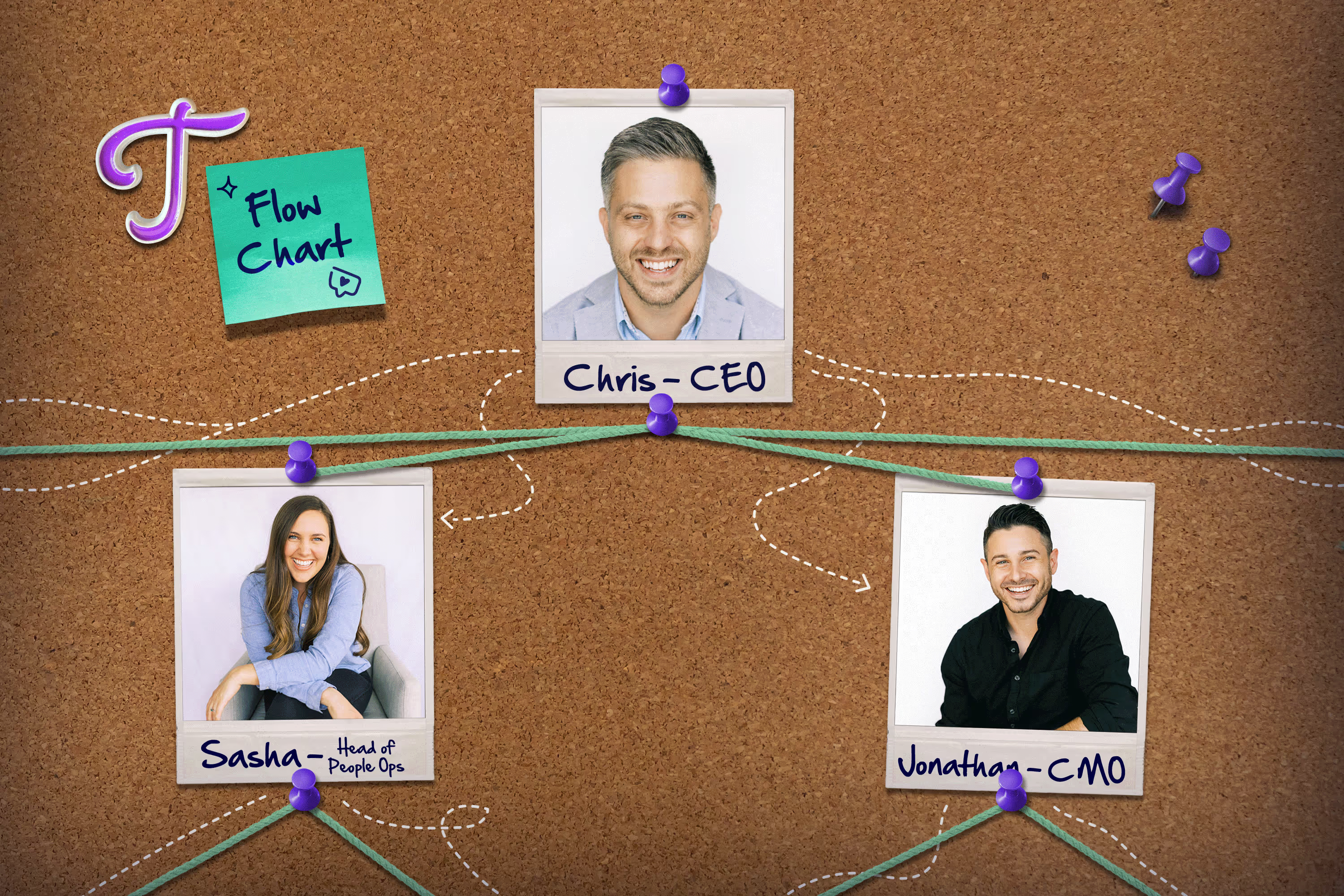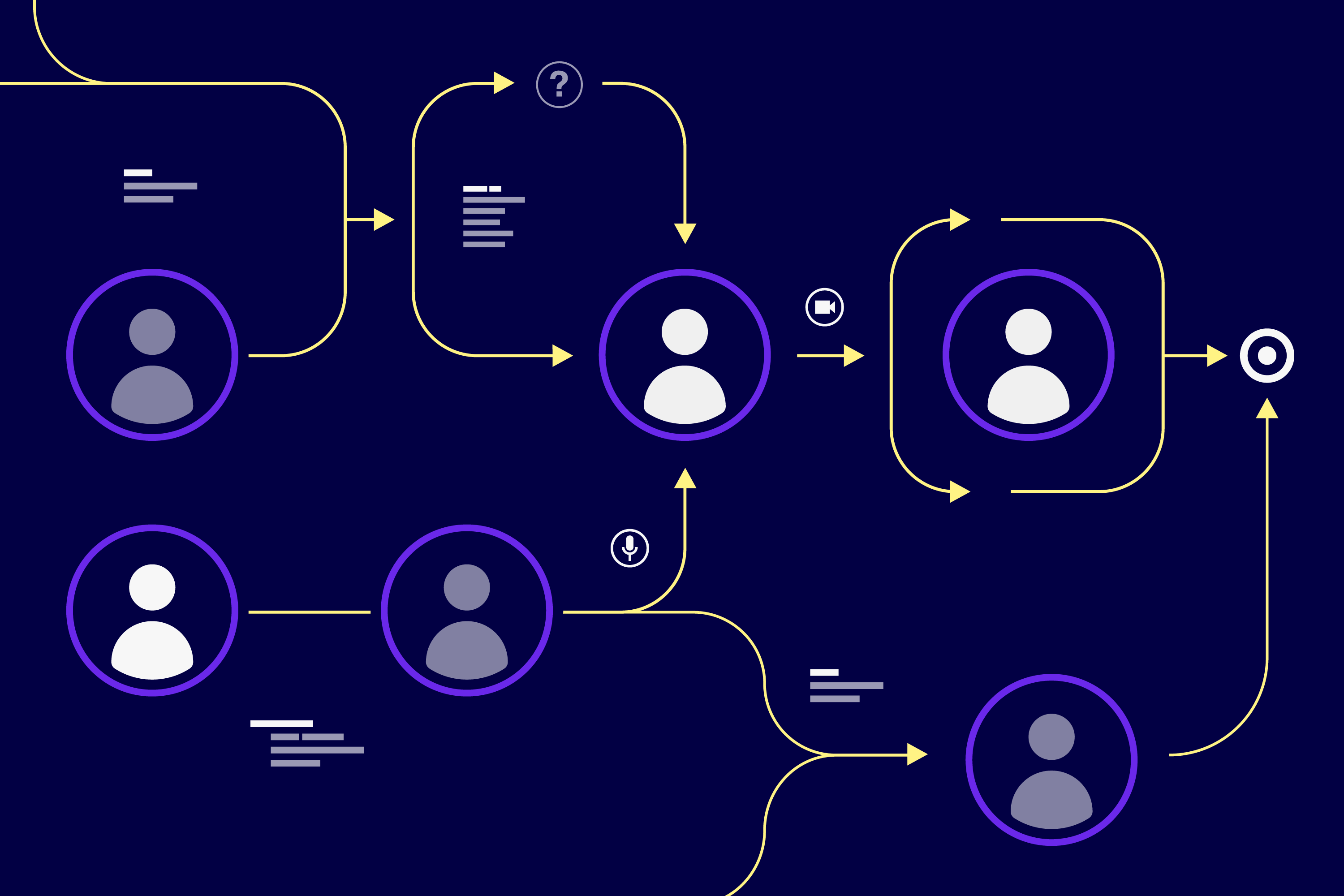
Articles
The Dos and Don’ts of Building an Employee Flowchart
July 21, 2022

The business world depends on fancy models, bewildering graphs, and complicated charts to help improve performance and guide businesses toward their goals.
But there’s one chart that doesn’t get the same press as others, and it's crucial to how your company operates: the employee flowchart. After all, everyone in your business should be familiar with its structure and layout. Understanding how different employees work together can be beneficial for everyone.
This guide will explain what an employee flowchart is, what you should include and avoid when creating one, and how to get started.
What’s an employee flowchart?
An employee flowchart represents how all the employees in your business relate to each other in terms of responsibility. It also visually outlines your company’s workflow and employee reporting.
And the effort it takes to create one will pay off in spades, as a solid flowchart can make communication processes clearer while helping with accountability (since everyone can see who’s responsible for certain tasks).
What should you include in an employee flowchart?
Titles and names.
An employee flowchart is your company on paper.
It includes the various titles of employees in your business — such as the CEO, directors, and department heads — and link them to faces around your organization.
You might house contact information under each of these titles to make your flowchart a one-stop spot for directory needs.
Lines, shapes, and arrows.
Connections between bubbles visually represent relationships.
The shapes you use should be intentional and clear. You can use lines in place of arrows, but be sure that you properly indicate the relationships across employees/roles.
Think of your flowchart as a map. If you’ve ever driven, you know there’s a huge difference between driving down a one-way or two-way street. Confusing the two can be dangerous and lead to awkward situations.
Why do I need an employee flowchart?
Budgeting.
An employee flowchart can help with decision-making because it gives leaders a clear picture of different departments, their support staff, and their needs, allowing them to make better forecasts concerning their budget.
Realistic projections at a granular level can prevent overspending and maximize efficiency. These small savings and cutbacks can add up!
Better communication.
Employee flowcharts clearly represent different departments’ employees and who they report to, leaving little room for miscommunication.
Employees save time because they can quickly identify the appropriate point of contact for their needs, avoiding unnecessary communications.
That way, they can cut back on conversations about discussions that need to happen, and actually partake in meaningful work interactions.
Visually representing opportunities for growth.
Is your organization proud to offer opportunities for growth and mentorship?
An employee flowchart shows your team what they can look forward to. They can conceptualize the skills they’ll need to work towards and develop for promotions and advancement.
For certain individuals, growth in the workplace can be a huge motivator and incentive to be highly engaged in the workplace. After all, motivated employees are empowered employees.
Keeping them accountable to their roles while demonstrating their potential to grow increases engagement, retention, and productivity.
Sounds like a win-win!
Help new hires.
Ah, to be the new kid on the block.
Understanding the food chain of a workplace is one of the ways we acclimate ourselves to our roles. But it can be hard to keep track of names and titles if you don’t have something to refer back to besides a name tag.
An employee flowchart is a useful tool for new hires that allows them to grasp the structure of your business quickly while guiding their interactions for the first few weeks of onboarding.
Plus, it means you get to spend less time doing uncomfortable and inorganic introductions.
.gif)
What are the dos and don'ts of building an employee flowchart?
The Dos:
Match your business strategy with your employee flowchart.
Is there a decision-making process you stick with? Do you tap in certain folks for big decisions? Or, do you prefer all of your team members weigh in on action items?
Your employee flowchart should echo a similar structure to those processes.
Depending on what that looks like, you may use something more hierarchical, or you may stick to something flatter and spread out.
Carry out continuous evaluations of your employee flowchart.
As with anything, continuous evaluations matter.
Over time, your business structure may change. Employees may leave, get promoted, or retire. You might also decide to remodel your business structure to reflect a new operating procedure.
But don’t forget to modify your employee flowchart to mirror such changes.
Use your chart as a living document that all employees have access to and understand.
Divide and conquer.
Get feedback from your team about what the chart should look like. Operations may look different on the ground, so asking leaders to pitch in can help you avoid the headache of creating a document that isn’t a fair or accurate representation of procedures.
The chances of creating a stronger employee flowchart with minimal mistakes are greater when you get feedback from a wider audience.
.gif)
The Don'ts:
Don’t design your employee flowchart without gathering the information you need.
Before creating your flowchart, it’s important to compile a complete list of all the employees in your business, their tasks, and the departments they fall under.
Your company playbook can help you do this. And if you don’t have one, now might be a great time to start putting one together.
A playbook is a single place where you can access information on your company’s culture and policies. And it can help you capture an accurate workflow in your flowchart.
Don’t force yourself to copy inaccurate employee flowcharts.
Your business is unique.
Your policy, culture, and mission are your own. Forcing your business into a box can stifle your success. Be sure that your representation of your business is true to your work and values.
Creating an employee flowchart for the first time can be daunting, and you may want to look at the flowcharts put forth by other companies as an example. But keep in mind that what works for one business might not work for yours. Think realistically about how your business functions and the culture you have adapted — and base your structure on that.
Coming up with a flowchart on your own may even inspire you to rethink your SOPs and reflect on your business’ structure.
What can I use to build my employee flowchart?
Sure, you can use your friendly neighborhood word processor or spreadsheet programs. But they can be cumbersome, difficult to update on the fly while notifying your entire team that’s there’s been a change.
Look to an LMS-alternative that can help you create an employee flowchart quickly and easily (like, ahem, Trainual). Some are even equipped with templates that easy to follow and edit so you don’t have to start from scratch.
Ready to create your employee flowchart?
Yeah, you are! With the tips outlined in this guide, you’ll be well on your way to creating an employee flowchart that’s easy to understand, access, and edit on the fly. Just remember to:
- Match your business strategy with your employee flowchart.
- Carry out continuous evaluations of your employee flowchart.
- Divide and conquer.
Once it’s done, don’t forget to share your hard work and keep your employee flow chart somewhere that’s easily accessible to everyone in the company.
Similar Blog Posts





.avif)




